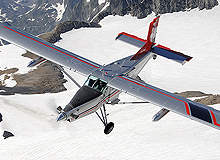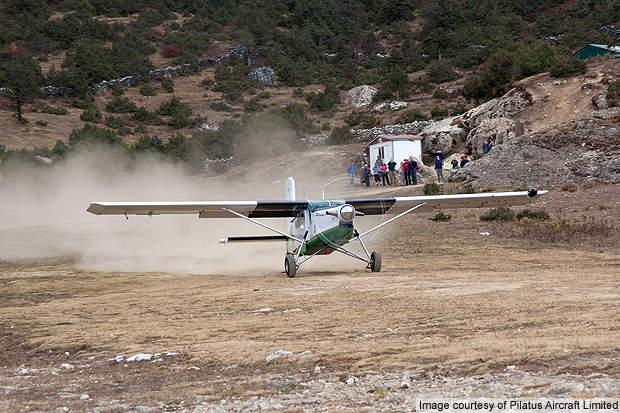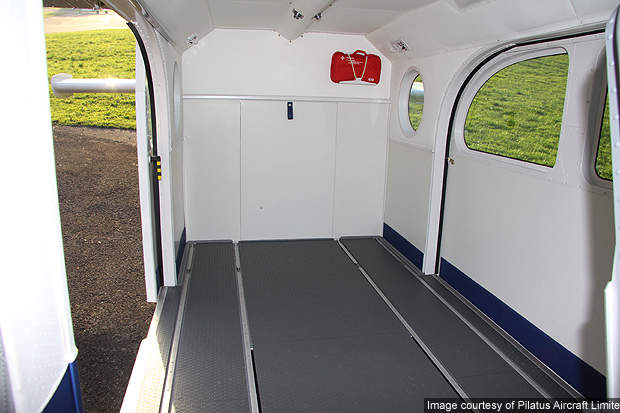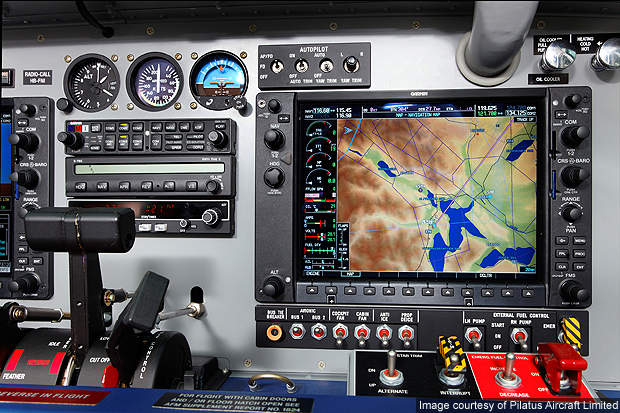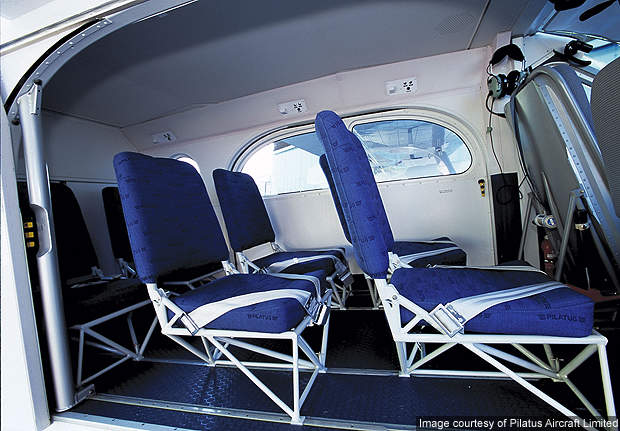The Pilatus PC-6 turboporter is a single engine, light utility passenger and freight aircraft designed and manufactured by Pilatus Aircraft, Switzerland. The PC-6 turboporter’s short take-off and landing (STOL) capability allows the aircraft to operate in all weather and all-terrain conditions. The turboporter took its maiden flight in 1961.
The aircraft was built under the Fairchild Hiller licence. It was called the "work horse" of the air due to its ability to operate in rough and terrain conditions.
Pilatus PC-6 variants
The Pilatus PC-6 has 15 variants namely PC-6/350, PC-6/A, PC-6/A1, PC-6/A2, PC-6/B, PC-6/B1, PC-6B2-H2, PC-6/C, PC-6/C1, PC-6/C2-H2, PC-6/D-H3, AU-23A Peacemaker, OV-12, UV-20A Chiricahua, and PC-8 Twin Porter.
The PC-6/350 is an enhanced version of the original PC-6 model. It is powered by a single Avco Lycoming IGO-540-A1A piston engine. This engine can produce 261kW of output power.
The PC-6/A turboporter is the first aircraft in the Pilatus fleet to be powered by Turbomeca Astazou IIE or an IIG turboprop engine. The variant’s engine can generate 320kW of power.
The PC-6/A1 turboporter is an improved version of PC-6/A turboporter. The variant is powered by Turbomeca Astazou XII turboprop engine, which can produce 427kW of power.
The PC-6/A2 turboporter is an enhanced version of the PC-6/A1, launched in 1971. It comes with a with Turbomeca Astazou XIVE turboprop engine.
The PC-6/B turboporter is fitted with an advanced Pratt & Whitney Canada PT6A-6A turboprop engine. This engine can produce 410kW of output power.
The PC-6/B1 turboporter is the next version of PC-6/B and is fitted with Pratt & Whitney Canada PT6A-20 turboprop engine that can generate 410kW of power.
The PC-6B2-H2 turboporter is equipped with Pratt & Whitney Canada PT6A-27 turboprop engine. This engine can produce 507kW of power.
The PC-6/C turboporter is a prototype designed and manufactured by Fairchild Industries, US. The variant is powered by a Garrett TPE331-25D turboprop engine. Each engine can generate 429kW of output power.
The PC-6/C1 turboporter shares similar features with the PC-6/C, but is built with a 429-kW (575-shp) Garrett TPE 331-1-100 turboprop engine.
The PC-6/C2-H2 porter is the enhanced version of PC-6/C1. It is powered by a single Garrett TPE 331-101F turboprop engine of 485kW capacity, and was developed by Fairchild Industries.
The PC-6/D-H3 porter is powered by a single avco Lycoming turbocharged piston engine with 373kW power capacity.
The AU-23A Peacemaker is a military variant, previously operated by the US Air Force. All the 35 aircraft made were sold to the Royal Thai Air Force.
The UV-20A Chiricahua is a military version of the PC-6 which is operated by the US Army.
The PC-8 Twin porter is the twin engined version launched in 1967.
Pilatus PC-6 missions
The Pilatus PC-6 turboporter was designed to perform a range of missions, including passenger and cargo transport, paradropping, ambulance, desert and bush operation, search and rescue, surveillance, smuggling, the trade of goods, geographic analysis and intelligence call for aerial surveillance and border patrolling.
The aircraft is fitted with forward-looking infrared (FLIR) cameras, light detection and ranging (LIDAR) and digital camera when performing search and rescue operations. Passenger seats in the PC-6 are replaced with two stretchers on both left and right side for ambulance missions. The PC-6 can accommodate ten passengers in triple-bench configuration or seven passengers on single seats during its operation as a passenger aircraft.
Short airstrips
The PC-6 is designed to operate in rigid, rough, short airstrips, sandy, stony, soft or muddy ground, remote areas, water, and ice or glaciers. The low-pressure tyres, twin-clipper disc brakes and an undercarriage with high bump absorption allow the aircraft to land on rough terrain conditions. Skis or float type landing gear facilitates the aircraft’s operation on snowfields, glaciers and lakes.
Semi-monocoque construction
The PC-6 aircraft has been built using semi-monocoque construction techniques. It is constructed with 2024 aluminium alloy sheet and extrusion. The metals used in the construction are safeguarded from corrosion by painting, enamelling before a rigid polyurethane-based external paint is applied.
Glass cockpit
The Pilatus PC-6 turboporter features a glass cockpit with two seats for a pilot and co-pilot or passenger. It is fully equipped with an advanced Garmin G950 cockpit avionics suite. A ready-to-fly system incorporated in the cockpit reduces the workload of the pilot through its automated functions.
The primary flight display (PFD) and multifunction display (MFD) installed in the cockpit clearly show the input flight data, making navigation easier for the pilot. The cockpit is also equipped with dual control brakes, weather radar, an oxygen system, eight outlet adapters and high frequency radios. Doors on both sides of the cockpit allow the pilot to board and deboard quickly. The aircraft is fitted with panoramic windows to provide clear visibility to the pilot and co-pilot / passenger.
Spacious cabin
The PC-6 features a spacious and comfortable cabin of 3m³ volume, which can accommodate either ten passengers or 1,000kg of freight. It features two large sliding doors as well as a trap door as an option for loading and unloading of cargo. The trapdoor takes a load of 150kg and can be closed or opened by the pilot during surveillance and parachuting operations.
The cabin can be easily converted to perform a range of surveillance operations. The seats can be removed without any design changes when an extra space is needed for cargo transportation.
The cabin features camera installation, parakit, passenger seat, Pax cargo kit, a rough tow bar and cabin ventilation with six outlets. It also incorporates two stretchers; nine tie down points and a triple-bench seat for different roles.
Pratt & Whitney engines
The PC-6 is powered by a single Pratt & Whitney Canada PT6A-27 turboprop engine, which produces 410kW of output power. It is fitted with a Hartzell HC-B3TN-3D three-blade aluminium propeller. The propeller is fitted with an anti-icing facility and can rotate at a constant speed of 2,200rpm. The length and diameter of the engine are 1.57m and 0.48m respectively.
Performance
The PC-6 can climb at a rate of 331m/min. The maximum and cruise speed of the aircraft are 244km/h and 232km/h respectively. Its stall speed is 107km/h. The range and service ceiling of the Pilatus PC-6 are 1,612km and 8,197m respectively. The aircraft weighs around 1,270kg and its maximum take-off weight is 2,800kg.

